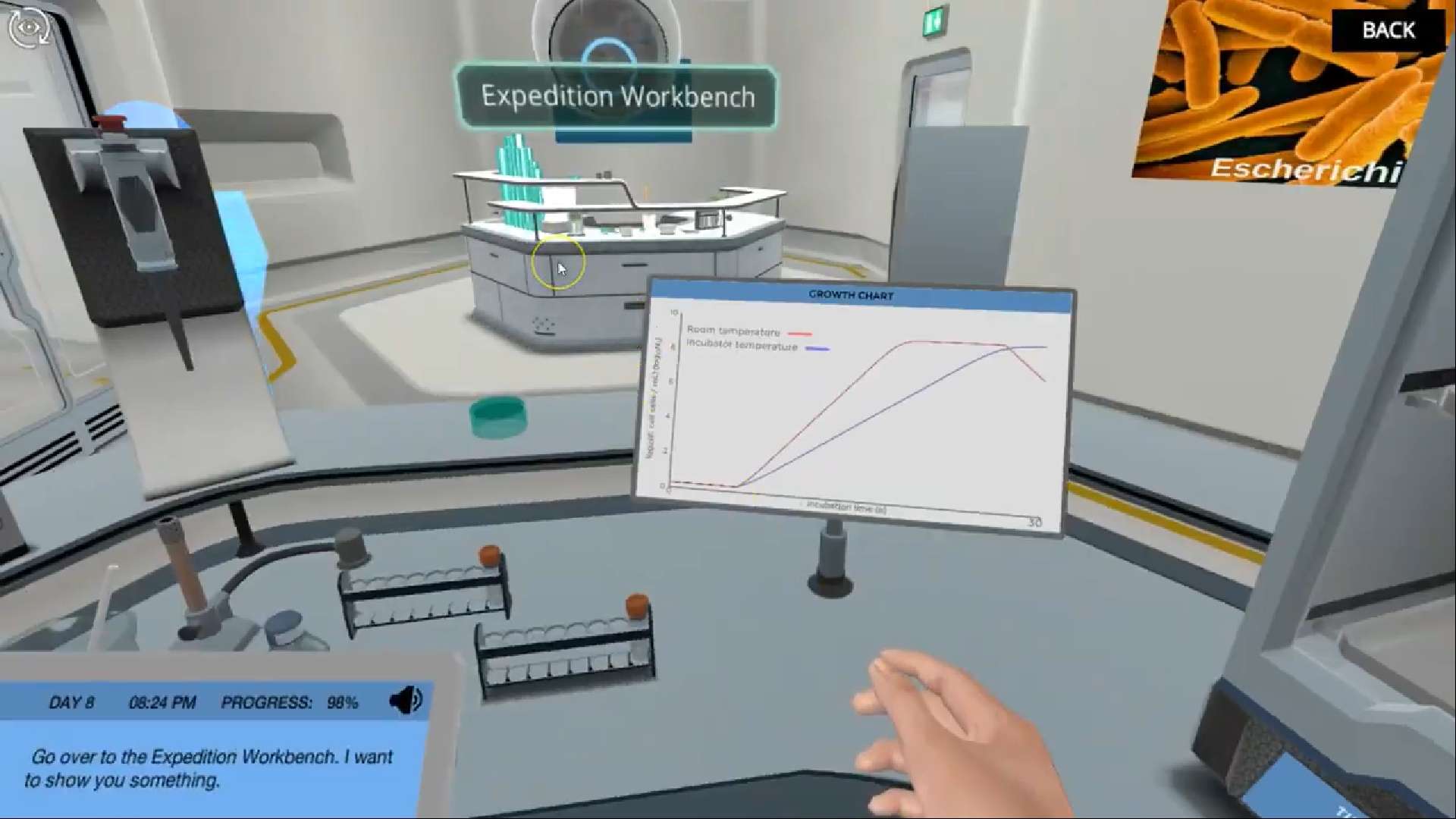Heading 1
Heading 2
Heading 3
Heading 4
Heading 5
Heading 6
Lorem ipsum dolor sit amet, consectetur adipiscing elit, sed do eiusmod tempor incididunt ut labore et dolore magna aliqua. Ut enim ad minim veniam, quis nostrud exercitation ullamco laboris nisi ut aliquip ex ea commodo consequat. Duis aute irure dolor in reprehenderit in voluptate velit esse cillum dolore eu fugiat nulla pariatur.
Block quote
Ordered list
- Item 1
- Item 2
- Item 3
Unordered list
- Item A
- Item B
- Item C
Bold text
Emphasis
Superscript
Subscript
About This Simulation
Learn about the mind-boggling speed of exponential growth and test how different growth conditions affect bacterial growth.
Learning Objectives
- Use given data to plot a growth curve on a semi-logarithmic scale
- Recognize the different phases of bacterial growth (lag, exponential, stationary, decline)
- Learn how the growth rate can be calculated from a growth curve
About This Simulation
Lab Techniques
- Aseptic Technique
Related Standards
- No direct alignment
- No direct alignment
- B.1 Microbiology: organisms in industry
Learn More About This Simulation
From a single cell to billions of bacteria in just a few hours…
In this simulation, you will experiment with bacterial growth and test the impact of different factors on bacterial growth. Will you be able to plot the bacterial growth and determine the different growth phases?
Find new antibiotics
This simulation is the sequel to the Bacterial Quantification by Culture simulation. In this simulation, your friend just came back from an expedition in the Amazon rainforest. One of her samples contains a fungi that seems to kill bacteria cells. Your goal is to determine if the fungal compound is effective in reducing the bacterial growth. If your experiment is successful, your findings might be used to create a novel drug that has the potential to save lives!
Plot bacterial growth curves
Your first task is to grow E. coli with the fungal compound and plot the bacterial growth. Your job is to determine the different phases of bacterial growth. This simulation allows you to experiment freely and set up your own experiment to determine the effect of temperature on bacterial growth.
Learn efficiently without creating waste
In a real lab, this experiment would take more than a week to complete and you would waste countless agar plates. But in a virtual lab, the tedious process of plating and counting the colonies can be skipped, and you can to analyze growth curves in only 30 minutes!
Will you be able to use these methods to find a compound that could be used as an antibiotic?
For Science Programs Providing a Learning Advantage
Boost STEM Pass Rates
Boost Learning with Fun
75% of students show high engagement and improved grades with Labster
Discover Simulations That Match Your Syllabus
Easily bolster your learning objectives with relevant, interactive content
Place Students in the Shoes of Real Scientists
Practice a lab procedure or visualize theory through narrative-driven scenarios


FAQs
Find answers to frequently asked questions.
Heading 1
Heading 2
Heading 3
Heading 4
Heading 5
Heading 6
Lorem ipsum dolor sit amet, consectetur adipiscing elit, sed do eiusmod tempor incididunt ut labore et dolore magna aliqua. Ut enim ad minim veniam, quis nostrud exercitation ullamco laboris nisi ut aliquip ex ea commodo consequat. Duis aute irure dolor in reprehenderit in voluptate velit esse cillum dolore eu fugiat nulla pariatur.
Block quote
Ordered list
- Item 1
- Item 2
- Item 3
Unordered list
- Item A
- Item B
- Item C
Bold text
Emphasis
Superscript
Subscript
A Labster virtual lab is an interactive, multimedia assignment that students access right from their computers. Many Labster virtual labs prepare students for success in college by introducing foundational knowledge using multimedia visualizations that make it easier to understand complex concepts. Other Labster virtual labs prepare learners for careers in STEM labs by giving them realistic practice on lab techniques and procedures.
Labster’s virtual lab simulations are created by scientists and designed to maximize engagement and interactivity. Unlike watching a video or reading a textbook, Labster virtual labs are interactive. To make progress, students must think critically and solve a real-world problem. We believe that learning by doing makes STEM stick.
Yes, Labster is compatible with all major LMS (Learning Management Systems) including Blackboard, Canvas, D2L, Moodle, and many others. Students can access Labster like any other assignment. If your institution does not choose an LMS integration, students will log into Labster’s Course Manager once they have an account created. Your institution will decide which is the best access method.
Labster is available for purchase by instructors, faculty, and administrators at education institutions. Purchasing our starter package, Labster Explorer, can be done using a credit card if you are located in the USA, Canada, or Mexico. If you are outside of North America or are choosing a higher plan, please speak with a Labster sales representative. Compare plans.
Labster supports a wide range of STEM courses at the high school, college, and university level across fields in biology, chemistry, physics, and health sciences. You can identify topics for your courses by searching our Content Catalog.















